Thank you! Your submission has been received!
Oops! Something went wrong while submitting the form.
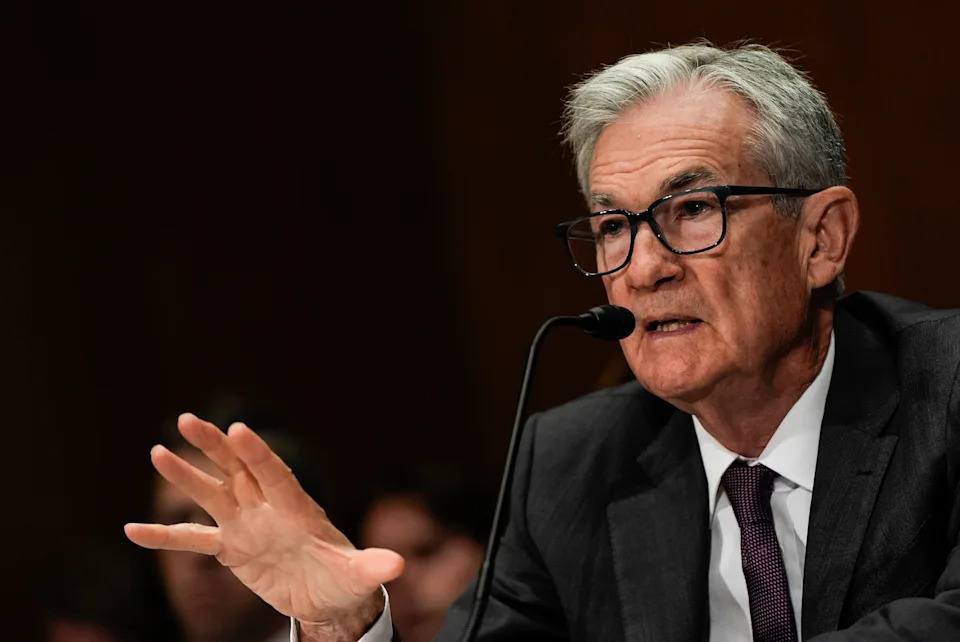
'That's the million-dollar question': Wall Street divided on Fed rate cuts as tariff uncertainty lingers
Key Points
- Nvidia's Milestone: Nvidia (NVDA) achieved a trillion-dollar valuation milestone amidst record-breaking stock market highs, highlighting its status as an AI industry leader.**
- Federal Reserve Debate: Wall Street is divided on the Federal Reserve's next move, with some like Goldman Sachs anticipating a September rate cut, while others caution against delays due to inflation and tariff risks.**
- Inflation Concerns: Despite recent declines in the Consumer Price Index (CPI), lingering inflation risks and potential tariff impacts continue to create uncertainty for the Fed's policy decisions.**
- Political Pressure: President Trump has publicly criticized Federal Reserve Chair Jerome Powell, demanding significant rate cuts to alleviate consumer burdens, adding political tension to the economic debate.**
- Economic Indicators: Experts like Michael Kantrowitz from Piper Sandler argue for lower rates, citing a weakening housing market as a critical area needing support for broader economic improvement.**
Summary
This article explores the ongoing debate on Wall Street regarding the Federal Reserve's next steps on interest rates amidst economic and political turbulence. Nvidia's recent trillion-dollar valuation milestone underscores market highs, while trade tensions and inflation risks fuel uncertainty. Some firms, like Goldman Sachs, predict a September rate cut due to softening labor markets and limited tariff impacts, forecasting three cuts by year-end. However, others warn that persistent inflation and tariff uncertainties might delay Fed action. President Trump's public demands for deep rate cuts add political pressure, criticizing the Fed's restrictive policies. Experts like Michael Kantrowitz argue for lower rates to support struggling sectors like housing, while others, including Jeff Schulze of ClearBridge Investments, suggest the Fed might hold off longer. The upcoming Consumer Price Index release will be a critical test for inflation trends. Market sentiment reflects this uncertainty, with a 60% chance of a September cut priced in, though the Fed itself remains divided, as revealed in recent meeting minutes. This policy limbo continues to influence market dynamics and investor expectations.
yahoo
July 13, 2025
Stocks

Trump Patience on Tariffs Runs Thin as Nations Jostle for Deals
Key Points
- Trump's Impatience: President Trump has expressed frustration with ongoing trade negotiations, opting to unilaterally set tariff rates as deadlines approach.**
- New Tariff Announcements: Letters sent to leaders in Mexico and the EU announced a 30% tariff rate starting Aug. 1, with potential for adjustment based on responses.**
- Global Impact: Countries like Japan, South Korea, Canada, and Brazil face significant tariff hikes, with rates up to 50% for some, amid escalating trade tensions.**
- Negotiation Challenges: Despite efforts from trading partners to mitigate tariffs, Trump's maximalist stance leaves little room for compromise before the deadline.**
- Broader Threats: Trump has widened his tariff targets, including BRICS nations and unrelated political disputes, signaling a weaponization of trade policy.**
Summary
President Donald Trump is intensifying his trade war by unilaterally imposing tariffs on key US trading partners, expressing impatience with prolonged negotiations. With a critical Aug. 1 deadline looming, Trump has announced a 30% tariff rate for Mexico and the EU, citing issues like fentanyl trafficking and trade deficits, while leaving room for potential adjustments based on responses. Other nations, including Japan, South Korea, Canada, and Brazil, face steep rates up to 50%, with Brazil's tariffs tied to unrelated political disputes. Despite frantic efforts by countries to negotiate exemptions or provisional agreements, Trump's maximalist approach—favoring unilateral action over dialogue—poses significant challenges. His administration has hinted at further blanket tariff increases and targeted levies on specific goods like copper and pharmaceuticals. While some deals, such as with the UK and Vietnam, have been reached, they come with caveats and unresolved issues. As the deadline nears, global markets and leaders brace for the economic fallout of Trump's aggressive tariff campaign, with uncertainty over whether he will follow through or if this is another negotiating tactic.
yahoo
July 13, 2025
Stocks

Breakfast cereal sales declined for decades before Kellogg's sale to Italian company
Key Points
- Declining Sales: U.S. cereal sales have been decreasing for over 25 years, with a 13% drop from 2.5 billion boxes in 2021 to 2.1 billion in the latest period, despite a brief pandemic surge.**
- Changing Consumer Preferences: The rise of portable breakfast options like Nutri-Grain and Clif Bars, along with concerns over sugar and artificial ingredients, has reduced cereal's appeal.**
- Health and Perception Issues: Cereals struggle with a processed food image, high sugar content (e.g., Lucky Charms at 24% of daily sugar intake), and criticism over artificial dyes, prompting some companies to phase them out.**
- Generational Shifts: Gen Z is redefining breakfast, often skipping it or eating cereal as a snack, while exploring diverse options like vegetables, yogurt, and shakes.**
- Industry Changes: The Kellogg Company split into Kellanova (snacks and international cereals) and WK Kellogg (North American cereals), with Ferrero Group planning to acquire WK Kellogg, and Mars Inc. targeting Kellanova.**
Summary
U.S. breakfast cereal sales have been declining for over two decades, dropping 13% from 2.5 billion boxes in 2021 to 2.1 billion recently, despite a brief pandemic boost. Factors include the popularity of portable breakfasts like Nutri-Grain bars, health concerns over sugar and artificial dyes, and a perception of cereal as heavily processed. Gen Z is reshaping breakfast norms, often skipping it or using cereal as a snack, while favoring diverse options like yogurt and vegetables. The industry is adapting, with Kellogg splitting into Kellanova (snacks) and WK Kellogg (cereals), the latter now targeted for acquisition by Ferrero Group, and Mars Inc. planning to buy Kellanova. Experts suggest cereal brands innovate with unique flavors, health-focused options, and niche marketing to appeal to varied consumer tastes, as legacy companies like General Mills compete with startups by offering high-protein variants.
yahoo
July 13, 2025
Stocks
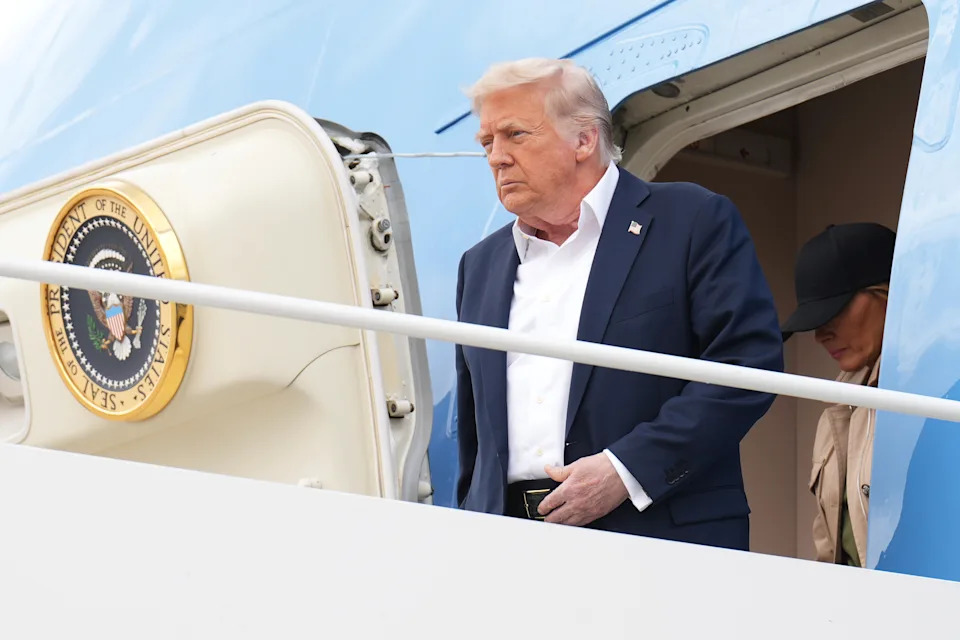
This week in Trumponomics: More tariff tantrums
Key Points
- Trump's Tariff Threats Continue: President Trump delayed the July 9 deadline for trade deals to August 1 but introduced new tariff threats, ranging from 20% to 40% on imports from countries like Japan, South Korea, and Indonesia, with higher rates for transshipped goods.**
- Unexpected Tariff Hikes: Surprising markets, Trump announced a 50% tariff on Brazilian imports linked to political conditions, a 50% tariff on copper, a potential 200% tariff on pharmaceuticals, and increased tariffs on Canadian, Mexican, and EU imports.**
- Rising Import Taxes: According to the Yale Budget Lab, recent changes will raise the effective import tax from 15% to nearly 19%, a significant jump from the 2.5% average when Trump took office.**
- Economic Impact Looming: While the real economic effects of tariffs are not yet fully evident, upcoming corporate earnings and the July 15 inflation report may reveal cost increases in various sectors, potentially pushing inflation from 2.3% to 3.5%-4% by year-end.**
- Trump's Strategy: Trump's tariff policy appears to be a tool for leverage, rewarding allies, punishing adversaries, and maintaining headlines, with little regard for market stability, suggesting ongoing unpredictability in trade policy.**
Summary
President Trump continues to wield tariffs as a powerful policy tool, delaying a July 9 trade deal deadline to August 1 while introducing new, unexpected tariff threats that unsettled markets. These include 20%-40% tariffs on imports from countries like Japan and South Korea, a 50% tariff on Brazilian goods tied to political demands, and potential 200% tariffs on pharmaceuticals. The Yale Budget Lab estimates these changes will raise the effective import tax from 15% to 19%, far above the 2.5% when Trump took office. Despite minimal real-world economic impact so far, upcoming corporate earnings and the July 15 inflation report may reveal cost increases in sectors like clothing and electronics, potentially driving inflation from 2.3% to 3.5%-4% by year-end. This prevents the Federal Reserve from cutting interest rates, fueling Trump's criticism of Fed Chair Jerome Powell, though his own trade policies are the root cause. Analysts warn markets not to underestimate Trump, as tariffs remain a preferred mechanism to address various issues, often prioritizing leverage over stability. With Trump's ability to adjust tariffs at will to reward allies or punish foes, the ongoing unpredictability suggests future trade deadlines will likely bring more surprises, maintaining a state of economic uncertainty.
yahoo
July 12, 2025
Stocks
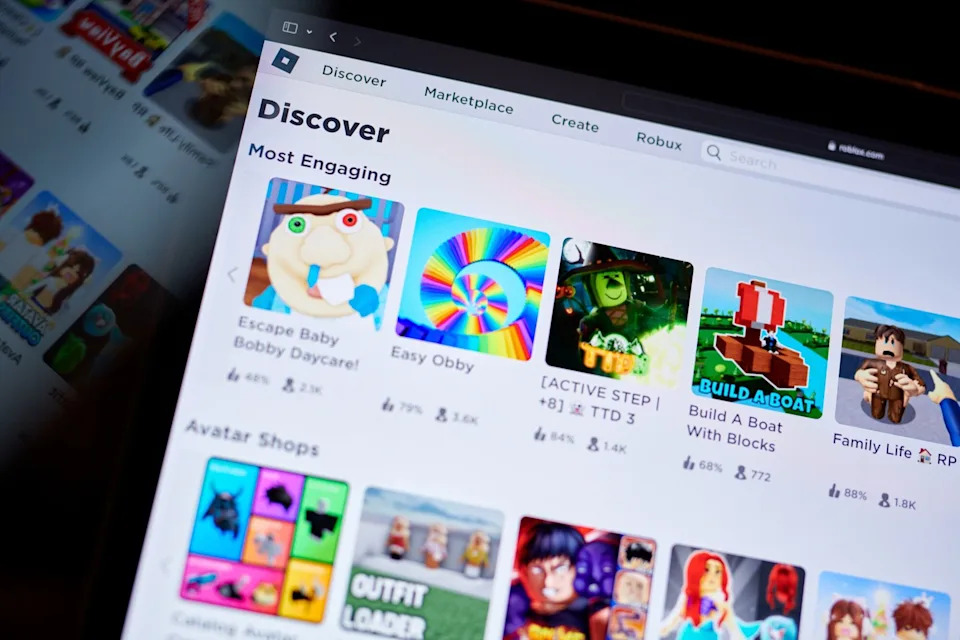
Roblox Game-Buying Frenzy Is Turning Teens Into Millionaires
Key Points
- Blue Lock: Rivals Success: A 19-year-old developer created the Roblox game Blue Lock: Rivals in just three months, which attracted over 1 million simultaneous players and generated $5 million monthly for Roblox Corp. before being sold for over $3 million to Do Big Studios.**
- Roblox Ecosystem Shift: Roblox's ecosystem is evolving with policy changes allowing easier game ownership transfers, leading to a surge in acquisitions, with seven of the top 15 earning games in June being acquired from original creators.**
- High-Value Transactions: Major deals include Do Big Studios acquiring a stake in Grow a Garden, which broke records with over 21 million simultaneous players, and Voldex Entertainment purchasing Brookhaven RP for a significant undisclosed sum.**
- Creator Earnings: Roblox's top 10 developers earned $36 million each in the year through March, with the company potentially paying out over $1 billion to creators in 2024, reflecting a highly lucrative market for young developers.**
Summary
A 19-year-old developer created Blue Lock: Rivals, a soccer-themed Roblox game with an anime aesthetic, in just three months, attracting over 1 million simultaneous players and generating $5 million monthly for Roblox Corp. The game was sold to Do Big Studios for over $3 million. Roblox, a platform for young creators, has seen a shift in its ecosystem, with policy updates facilitating game ownership transfers. This has spurred a wave of acquisitions, with companies like Do Big and Voldex Entertainment buying popular titles such as Grow a Garden and Brookhaven RP for significant sums. Seven of the top 15 earning games in June were acquired from original owners, per Naavik’s research. Roblox’s top developers earned $36 million each in the year through March, with projections of over $1 billion in creator payouts for 2024. The platform’s capitalist nature, as noted by Voldex’s CEO, encourages economic success for creators, often anonymous teens, who trade or sell games via platforms like Discord. This burgeoning market also sees developers flipping games based on fleeting trends, with some deals reaching seven or eight figures, highlighting Roblox’s growing financial potential for young talent.
yahoo
July 12, 2025
Stocks
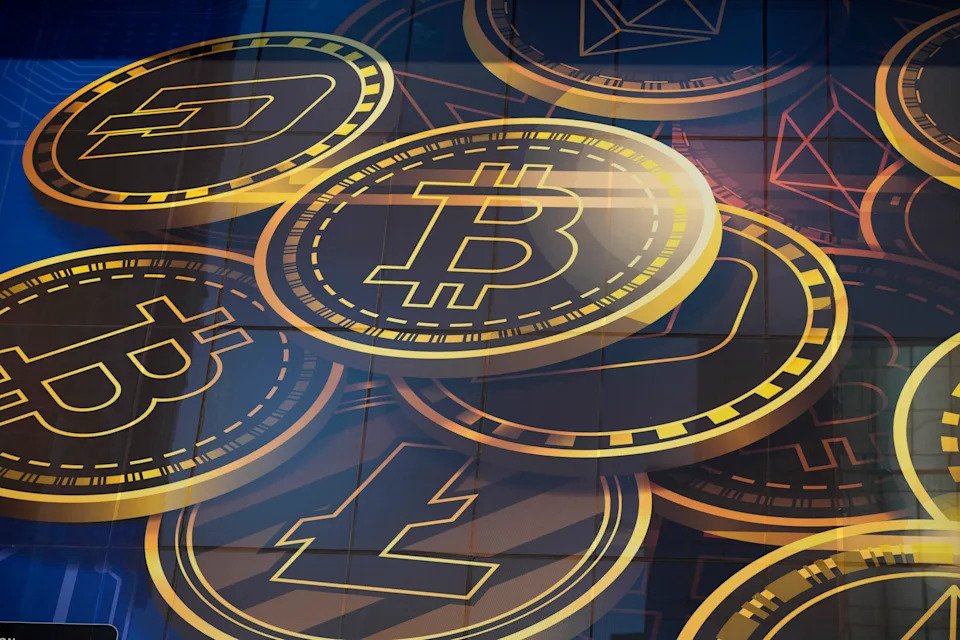
Bitcoin surges to new highs above $118,000 as investors go risk-on
Key Points
- Bitcoin (BTC-USD) reached a new all-time high, surpassing $118,000, driven by bullish momentum in risk assets.
- Bitcoin's price surge aligns with Nvidia (NVDA) hitting a $4 trillion valuation, reflecting a strong correlation with tech stocks.
- Year-to-date, Bitcoin has risen approximately 21%, supported by crypto-friendly policies from the Trump administration.
- Institutional inflows and corporate participation, including companies like MicroStrategy (MSTR) and GameStop (GME), are fueling the rally.
- Upcoming "Crypto Week" in Congress, starting July 14, could shape regulatory frameworks and further boost institutional confidence in crypto.
Summary
Bitcoin (BTC-USD) soared to a record high above $118,000, riding a wave of bullish sentiment across risk assets, coinciding with Nvidia (NVDA) reaching a $4 trillion valuation. This surge underscores Bitcoin's strong correlation with tech stocks, as noted by crypto analyst Nic Puckrin. Year-to-date, Bitcoin has gained about 21%, bolstered by pro-crypto policies from the Trump administration, including plans for a strategic Bitcoin reserve. The rally is driven by sustained institutional inflows and growing corporate adoption, with companies like MicroStrategy (MSTR) and GameStop (GME) adding Bitcoin to their balance sheets. Meanwhile, Trump Media & Technology Group (DJT) filed for a Bitcoin-heavy ETF. As Congress prepares for "Crypto Week" on July 14 to debate key legislation like the GENIUS Act for stablecoins, favorable outcomes could further accelerate institutional investment. Trading platforms like Robinhood (HOOD) and Coinbase (COIN) saw gains, while Circle (CRCL), issuer of USDC, jumped 2% amid a 500% rise since its IPO. Analysts suggest that a supportive regulatory framework could solidify Bitcoin's status as a macro asset and enhance confidence in compliant crypto platforms.
yahoo
July 11, 2025
Stocks
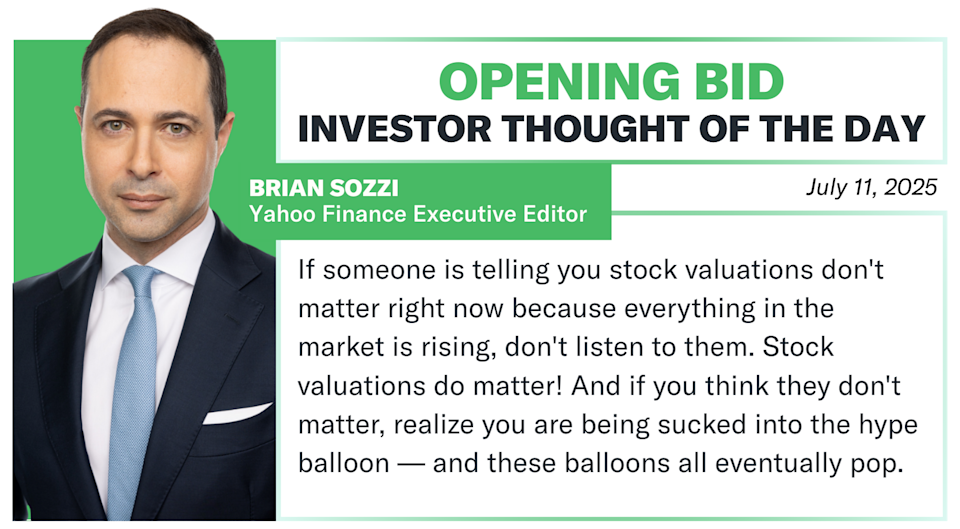
Vietnam Surprised by Trump Tariff Decision, Seeks Lower Rate
Key Points
- Vietnam's leadership was surprised by US President Donald Trump's announcement of a 20% tariff, as they had anticipated a lower rate in the 10%-15% range.
- Following the announcement, Vietnam's party chief To Lam instructed negotiators to continue efforts to reduce the tariff rate.
- The Vietnamese government has limited public discussion of the tariff in state media, with instructions to avoid speculative content until a consensus is reached with the US.
- Vietnam is balancing relations with the US and China, its largest trading partner, while addressing US demands to prevent transshipment of Chinese goods through Vietnam.
- Despite the tariff uncertainty, foreign investors view the 20% rate as a favorable deal, with Vietnamese stocks reaching a three-year high.
Summary
Vietnam was taken aback by US President Donald Trump’s announcement of a 20% tariff on its exports, having expected a rate between 10% and 15%. Following a call with Trump, Vietnam’s party chief To Lam directed negotiators to push for a lower rate, as the higher figure was unexpected. The Vietnamese government has kept public discussion minimal, with state media instructed to avoid speculative content until an agreement is finalized with the US. Vietnam, a major export hub with a significant trade surplus with the US, is navigating complex relations with both Washington and Beijing, its largest trading partner. The US has pressed Vietnam to curb the rerouting of Chinese goods to evade higher tariffs, prompting Hanoi to tighten regulations on origin-of-goods fraud. Despite the uncertainty, foreign investors remain optimistic, with Vietnamese stocks hitting a three-year high, interpreting the tariff as a relatively good deal. Meanwhile, Vietnam continues to strengthen economic ties with China, including plans for a railway link, underscoring its delicate balancing act. Neither side has released detailed plans on how the 20% tariff or a 40% levy on transshipped goods will be enforced, leaving many questions unanswered as Trump considers broader tariffs of 15%-20% on other trading partners.
Josh Wingrove and Nguyen Dieu Tu Uyen
July 11, 2025
Stocks

Markets Embolden Trump on Tariffs, Stoking Fear of Overreach
Key Points
- Trump's Tariff Threats: President Trump has threatened to increase the universal tariff rate to 20%, doubling the current baseline, and proposed a flat tariff of 15-20% on all trading partners, surpassing the existing 10% rate.**
- Market Reactions: Financial markets showed mixed responses with declines in S&P 500 and European stock contracts, a slight rise in the dollar, and gains in export-dependent Asian equities despite the tariff news.**
- Market Complacency: Analysts and figures like Jamie Dimon of JPMorgan Chase warn that markets are too complacent about the risks of escalating trade frictions, with record highs and low volatility indices suggesting over-optimism.**
- Potential Economic Impact: Higher tariffs could lead to equity declines, weaker demand, and higher costs for imported goods, potentially impacting global economic growth, especially in regions like Southeast Asia.**
Summary
President Donald Trump has intensified trade tensions by threatening to raise the universal tariff rate to 20%, exceeding the current 10%, and proposing a 15-20% flat rate on all trading partners. This follows new levies on Canada and a steep 50% tariff on Brazil. Despite these threats, Trump cites record stock market highs as evidence of policy success, though financial markets displayed mixed reactions with declines in S&P 500 and European stocks, a stronger dollar, and gains in Asian equities. Analysts warn of market complacency, with figures like Jamie Dimon highlighting the risks of escalating trade frictions. Low volatility indices and record highs suggest markets may have priced in an overly optimistic outlook, ignoring potential economic fallout. Higher tariffs could trigger equity declines, weaker demand, and increased costs for imported goods, posing risks to global growth, particularly in export-heavy regions like Southeast Asia. While some fear an economic blow, inflation in the US remains contained, and the full impact of these tariffs—whether implemented or merely threats to gain concessions—remains uncertain. Market strategists advise caution, noting the policy overload and constant updates create a confusing environment for investors.
Katia Dmitrieva and Swati Pandey
July 11, 2025
Stocks

Trump tariffs live updates: Canada struck with 35% tariffs, Trump floats higher blanket rates
Key Points
- Trump's Tariff Agenda: President Trump is implementing significant tariffs, including a 35% tariff on Canadian goods starting August 1, citing fiscal retaliation and national security concerns like Fentanyl crossings and dairy duties.**
- Global Impact: Tariffs range from 15%-20% on most trading partners, 50% on Brazilian goods due to political issues, and 50% on copper imports, with a potential 200% tariff on pharmaceuticals looming.**
- Specific Country Deals: Vietnam faces a 20% tariff with a higher 40% on transshipped goods, while the EU is negotiating a 10% universal tariff with sector exemptions.**
- Market Reactions: Copper traders are shifting focus to Chinese buyers to offload metal before U.S. tariffs hit, while companies like Antofagasta see potential opportunities in stalled U.S. projects.**
- Political Fallout: Brazil's President Lula faces political and economic challenges with Trump's 50% tariffs, potentially using resistance as a strategy ahead of the 2026 election.**
Summary
President Trump is aggressively pursuing his tariff agenda, announcing a 35% tariff on Canadian imports starting August 1, citing issues like Fentanyl crossings and trade deficits, alongside broader tariffs of 15%-20% on most trading partners. Specific measures include a 50% tariff on Brazilian goods due to political grievances involving former President Bolsonaro, and a 50% tariff on copper imports, impacting global metal markets as traders pivot to Chinese buyers. Vietnam faces a 20% tariff, with higher rates for transshipped goods, while the EU negotiates a 10% rate with exemptions. These policies have sparked varied reactions, from economic uncertainty and potential retaliation from countries like China and Brazil to opportunities for companies like Antofagasta with stalled U.S. projects. In Brazil, President Lula grapples with political and economic fallout, potentially leveraging resistance to Trump’s tariffs for domestic support ahead of the 2026 election. The tariffs introduce significant uncertainty into global trade dynamics and domestic economies.
yahoo
July 11, 2025
Stocks
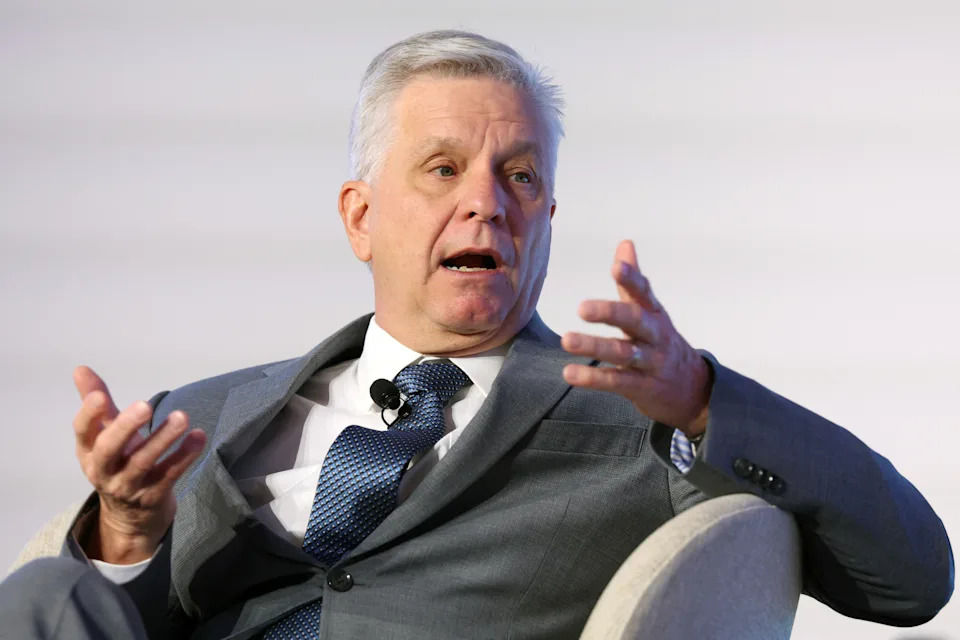
'It’s not political': Waller again calls for rate cut in July, reinforcing Fed divide
Key Points
- Federal Reserve Governor Christopher Waller supports cutting interest rates in July, arguing that inflation from tariffs is temporary and not politically motivated.
- Divisions within the Fed are evident, with some members like St. Louis Fed President Alberto Musalem remaining cautious about the duration of tariff-induced inflation.
- San Francisco Fed President Mary Daly anticipates two rate cuts this year, with September as a potential starting point, showing a slightly dovish stance.
- Waller’s influence is growing as a potential successor to Fed Chair Jerome Powell, whose term ends in May next year.
- President Trump aligns with Waller, urging rapid rate cuts to reflect economic strength and reduce interest on national debt.
Summary
Federal Reserve Governor Christopher Waller recently advocated for a potential interest rate cut in July, asserting that inflation from tariffs will be temporary and not politically driven. This stance highlights a growing divide within the Fed, as other members express varied opinions on the impact of President Trump’s tariffs on inflation and monetary policy. St. Louis Fed President Alberto Musalem remains undecided, cautioning that tariff effects on intermediate goods could have lasting inflationary impacts, while San Francisco Fed President Mary Daly leans toward two rate cuts this year, eyeing September as a possible start. Waller’s arguments gain significance as he is a potential candidate to replace Fed Chair Jerome Powell next May. Meanwhile, President Trump supports immediate rate cuts, citing economic strength and reduced debt interest costs. However, Fed Chair Powell and others advocate patience, pointing to a resilient economy and the need to assess tariff-driven inflation risks over the summer. Minutes from the June Fed meeting reveal further splits, with some members doubting any cuts this year due to persistent inflation risks, while others see tariff effects as temporary, supporting rate adjustments in 2023. This ongoing debate underscores the uncertainty surrounding inflation expectations and the Fed’s future policy direction amidst economic and political pressures.
yahoo
July 11, 2025
Stocks
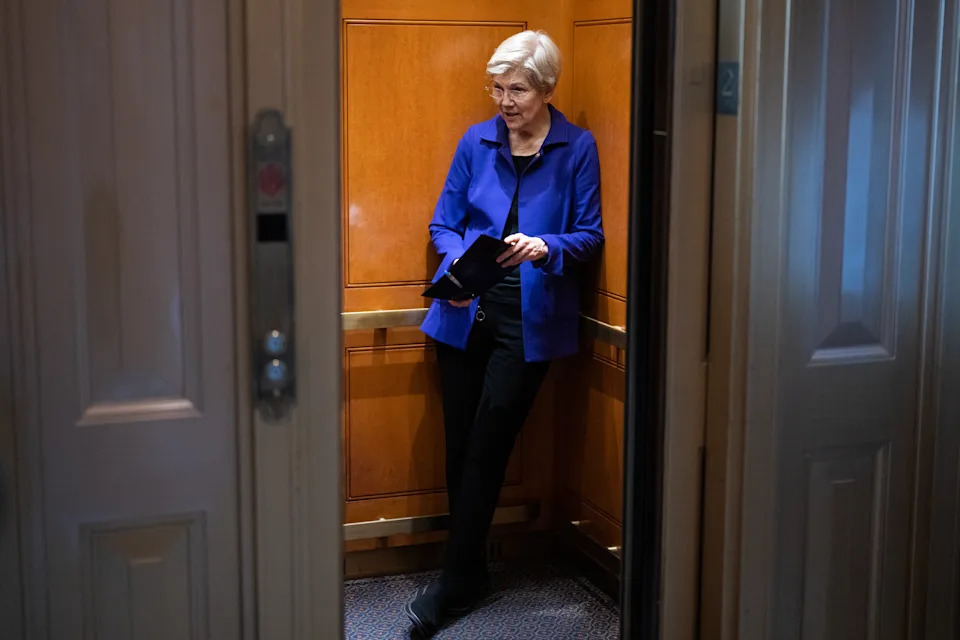
Warren wants Trump’s FTC to see if companies are using tariffs as cover for price gouging
Key Points
- Renewed Call for Investigation: Senator Elizabeth Warren and 15 other Democratic lawmakers are urging the Federal Trade Commission (FTC) to investigate potential "tariff-enabled price-gouging" due to President Trump's trade policies, citing growing anecdotal evidence of price increases impacting consumers.**
- Evidence from Surveys: The Democrats reference a Federal Reserve Bank of New York survey indicating that some businesses are raising prices on goods unaffected by tariffs, possibly exploiting the current pricing environment, alongside passing on actual tariff costs.**
- Political and Economic Concerns: The letter highlights the political significance of consumer price effects from Trump's trade strategies, with Trump dismissing fears of price impacts and asserting that foreign entities should absorb tariff costs.**
- Previous Unanswered Request: This is the second letter from Warren and colleagues, following an unanswered May request, now pressing FTC Chair Andrew Ferguson to examine if large companies are using Trump's tariff policies to unjustly raise prices.**
- Mixed Research Findings: Additional surveys and expert opinions, including from Federal Reserve Governor Christopher Waller, suggest that while isolated price gouging may occur, it is not expected to significantly contribute to inflation beyond direct tariff effects.**
Summary
Senator Elizabeth Warren, alongside 15 Democratic lawmakers, has renewed a push for the Federal Trade Commission to investigate whether President Trump’s trade policies are leading to "tariff-enabled price-gouging." In a letter shared with Yahoo Finance, they cite anecdotal evidence from a Federal Reserve Bank of New York survey suggesting that some companies are raising prices on goods unaffected by tariffs, potentially exploiting the current economic climate, while also passing on actual tariff costs to consumers. This follows an unanswered May letter raising similar concerns. The Democrats emphasize the political weight of consumer price impacts, despite Trump’s assertions that foreign nations should bear tariff costs and his administration’s claims of declining imported goods prices. Surveys from the Institute for Supply Management and the New York Fed reveal mixed business responses, with some firms admitting to opportunistic price hikes. While Federal Reserve Governor Christopher Waller acknowledges isolated instances of gouging, he doubts it will significantly fuel inflation beyond direct tariff effects. Historical examples, like the 2019 tariff on washing machines inflating dryer prices, underscore unpredictable outcomes. With consumer effects from Trump’s trade plans under scrutiny, and Trump himself monitoring for price increases at companies like Walmart, the issue remains a focal point. The lawmakers, including prominent House and Senate Democrats, await a response from the Trump-appointed FTC Chair Andrew Ferguson, as the debate over tariffs and pricing continues to shape economic discourse.
yahoo
July 10, 2025
Stocks

Delta stock soars after earnings beat, reinstated guidance; CEO says tax bill and trade deals are removing uncertainty
Key Points
- Delta Air Lines (DAL) reported strong Q2 results with adjusted revenue of $15.5 billion, slightly below estimates, and EPS of $2.10, surpassing expectations.
- Delta reinstated its full-year EPS guidance of $5.25 to $6.25, reflecting improved economic clarity and confidence amidst global trade war challenges.
- The airline saw a stock surge of over 10%, triggering a sector-wide rally with gains in American Airlines (AAL), Southwest (LUV), and United Airlines (UAL).
- Premium revenue outperformed economy by 5%, and loyalty revenue grew 8%, driven by co-branded credit card spending with American Express.
- CEO Ed Bastian highlighted strong summer travel demand, especially internationally, and emphasized Delta’s focus on premium services as a competitive edge.
Summary
Delta Air Lines, the world’s largest carrier by revenue, reported robust second-quarter results, posting adjusted revenue of $15.5 billion and earnings per share of $2.10, beating expectations. Despite a slight revenue shortfall, the airline reinstated its full-year EPS guidance at $5.25 to $6.25, buoyed by improving economic conditions and progress in trade negotiations. Delta’s stock jumped over 10%, sparking a rally across the airline sector, with peers like American Airlines, Southwest, and United Airlines also seeing gains. CEO Ed Bastian noted stronger demand for the second half of the year, driven by consumer and business confidence, and highlighted Delta’s edge over budget carriers due to its focus on premium and business travelers. Premium revenue grew 5% faster than economy, while loyalty revenue rose 8%, fueled by partnerships like American Express. Bastian also praised a strong summer travel season, particularly internationally, despite trade war impacts on foreign passenger numbers. Delta’s investment in premium services and reliability positions it to capitalize on industry trends favoring quality experiences at competitive prices.
yahoo
July 10, 2025
Stocks
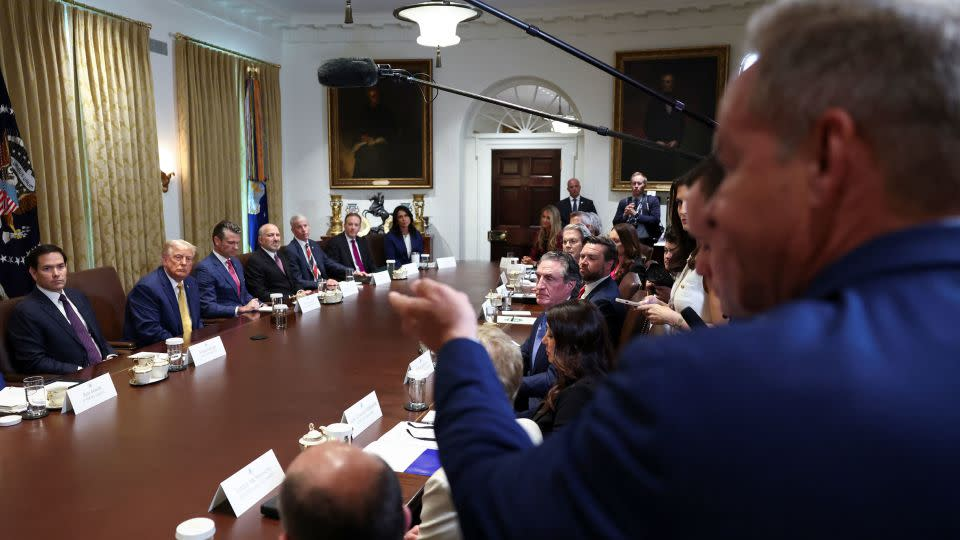
Trump’s 50% Levy on Brazil Shows World Nothing Is Off Limits
Key Points
- Trump's Tariff Threat: Donald Trump threatened a 50% tariff on Brazil, citing the treatment of former President Jair Bolsonaro and demanding the dismissal of charges against him, marking an unprecedented use of trade policy to influence foreign judicial proceedings.**
- Brazil's Response: Brazilian President Luiz Inacio Lula da Silva rejected Trump's interference, asserting national sovereignty and warning of economic reciprocity measures in response to any unilateral tariff hikes.**
- Broader Implications: This move raises concerns among US trade partners that any issue could become a trade agenda problem under Trump, undermining the reliability of formal trade agreements and reciprocal tariff negotiations.**
- Market Impact: The threat led to a 2.9% drop in the Brazilian real against the US dollar and a slight retreat in US equity futures, reflecting uncertainty over Trump's trade policies.**
- Global Trade Strategy: Trump's actions, including tariffs on other nations like Algeria and Libya, and threats to BRICS countries, indicate a broader strategy of using tariffs to achieve geopolitical goals beyond trade balances.**
Summary
Donald Trump has threatened a 50% tariff on Brazil over the judicial treatment of former President Jair Bolsonaro, marking a significant escalation in using trade policy for unrelated political demands. In a letter, Trump demanded the dismissal of charges against Bolsonaro, labeling the trial a "witch hunt." Brazilian President Luiz Inacio Lula da Silva firmly rejected this interference, emphasizing Brazil's sovereignty and warning of retaliatory economic measures. This unprecedented move has heightened concerns among US trade partners about the unpredictability of Trump's trade agenda, suggesting that any issue could trigger tariff actions, regardless of existing agreements. The threat caused a 2.9% drop in the Brazilian real and minor declines in US equity futures, reflecting market uncertainty. Trump's broader strategy includes tariffs on nations like Algeria, Libya, and BRICS countries, often tied to geopolitical goals such as curbing fentanyl flow or protecting the US dollar's dominance. Analysts warn that such actions could erode confidence in US trade policy stability, potentially pushing emerging economies closer together. Despite a negotiation deadline of August 1, 2025, skepticism remains about the finality of any deals, as Trump continues to wield tariffs as a tool for diverse objectives, leaving global trade relations in flux.
Swati Pandey and Katia Dmitrieva
July 10, 2025
Stocks
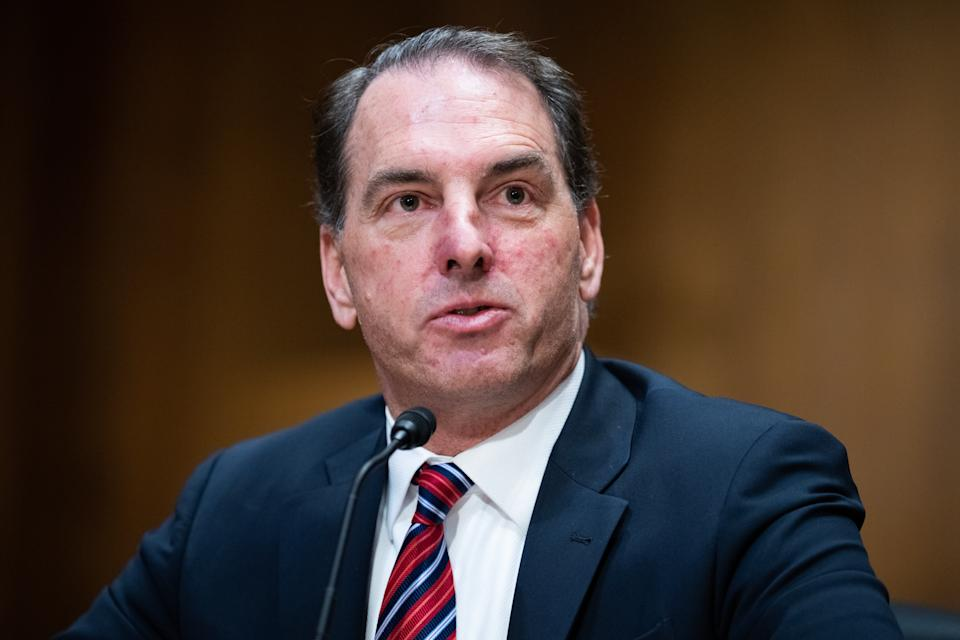
India Seeks to Dodge Trump’s BRICS Wrath as It Eyes Trade Deal
Key Points
- India's Stance on US Dollar: India is emphasizing that it has no intention of challenging the US dollar's global dominance, aiming to avoid conflict with President Donald Trump's criticism of BRICS.**
- Trump's Tariff Threats: Trump has labeled BRICS as "anti-American" and threatened tariffs, including a 50% levy on Brazil, while India faces potential 10% tariffs despite nearing a trade deal with the US.**
- India's Diplomatic Approach: Unlike other BRICS nations, India has refrained from public criticism of Trump's anti-BRICS remarks, focusing on maintaining strong ties with Washington.**
- Strategic Positioning: As India prepares for BRICS chairmanship in 2026, it seeks to differentiate itself from China and Russia by highlighting its neutral stance on currency issues and strategic value to the US.**
Summary
India is navigating a delicate balance in its relationship with the US amid President Donald Trump's criticism of the BRICS group, which he accuses of undermining the US dollar's dominance. While Trump has imposed significant tariffs on other BRICS nations like Brazil and threatened a 10% tariff on all members, including India, New Delhi is keen to avoid confrontation. Indian officials stress that the country does not support a unified BRICS currency or de-dollarization, focusing instead on reducing trade risks through local currency arrangements. Unlike Brazil and South Africa, India has refrained from publicly responding to Trump's remarks, prioritizing its strategic partnership with the US, especially as a counterweight to China. With a potential US-India trade deal on the horizon and India set to assume BRICS chairmanship in 2026, the country is positioning itself as distinct from other BRICS members like China and Russia. Despite recent strains, including Trump's claims regarding India-Pakistan relations, both nations aim to finalize the trade agreement by fall, which could reinforce their ties. India's cautious approach reflects its intent to maintain strong US relations while managing its role within BRICS.
Sudhi Ranjan Sen and Shruti Srivastava
July 10, 2025
Stocks
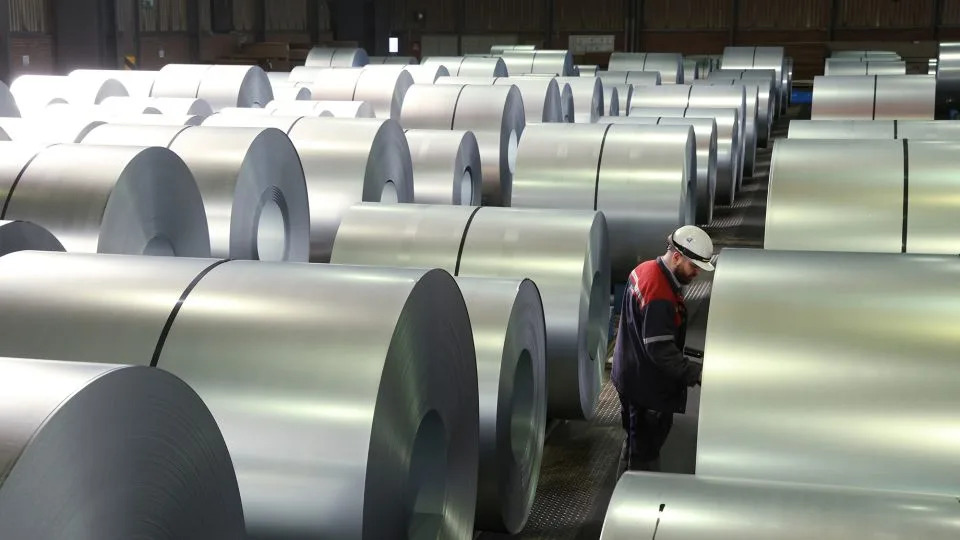
Trump promised 200 deals by now. He’s gotten 3, and 1 more is getting very close
Key Points
- Trade Deal Discrepancy: President Trump claimed to have completed trade deals with 200 countries within his first 100 days, but only three agreements—with China, the UK, and Vietnam—have been announced.**
- Deadline Extensions: Initially setting a deadline for trade deals, Trump postponed "Liberation Day" tariffs from July 9 to August 1 to allow more negotiation time, especially with the European Union.**
- EU Negotiations Progress: The US and EU are close to a framework agreement with 10% tariffs and ongoing discussions, marking a shift in Trump’s previously critical stance toward the EU.**
- Other Trade Challenges: Negotiations with countries like India, South Korea, and Japan face hurdles due to tariffs on key industries, with new tariffs imposed on Japan and South Korea at 25%.**
- Global Reactions: Some nations, including Indonesia, Cambodia, Thailand, and Brazil, are making substantial offers to secure deals, while the EU threatens countermeasures if no agreement is reached by the deadline.**
Summary
In his first 100 days, President Donald Trump claimed to have secured trade deals with 200 countries, yet only three—with China, the UK, and Vietnam—have been confirmed. Initially setting a deadline for global trade agreements, Trump delayed "Liberation Day" tariffs from July 9 to August 1 to allow more negotiation time, particularly with the European Union (EU). The EU and US are nearing a framework deal with 10% tariffs, a significant shift from Trump’s earlier criticism of the bloc, spurred by his threat of 50% tariffs. However, challenges persist with other nations like India, South Korea, and Japan, where sectoral tariffs on autos and steel remain contentious; Trump recently imposed 25% tariffs on Japan and South Korea. While countries such as Indonesia, Cambodia, Thailand, and Brazil are pushing for agreements, clarity on US expectations is lacking. Trump expresses frustration over unacceptable offers from trading partners, emphasizing his goal to stop countries from exploiting the US. The EU has warned of retaliatory measures if no deal is reached by the extended deadline, highlighting the high stakes of these ongoing negotiations.
yahoo
July 10, 2025
Stocks
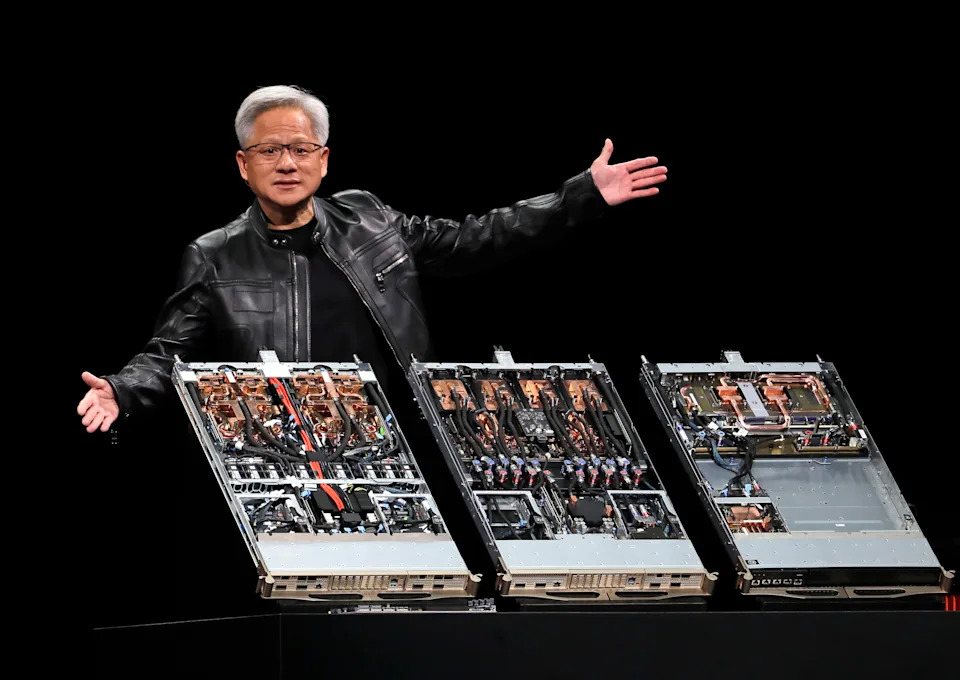
Nvidia becomes first $4 trillion publicly traded company
Key Points
- Nvidia (NVDA) became the first publicly traded company to reach a $4 trillion market cap, surpassing tech giants like Microsoft and Apple.
- The company's stock has risen 22% year-to-date and 24% over the past 12 months, driven by the generative AI boom.
- Nvidia's chips and software dominate AI training and inferencing, maintaining a competitive edge over rivals like AMD and Intel.
- Major tech firms, including Amazon, Google, and Meta, are investing heavily in Nvidia's hardware for AI data centers.
- Despite challenges like U.S. export bans to China and market fears, Nvidia's stock continues to climb with upcoming innovations like Blackwell Ultra chips.
Summary
Nvidia (NVDA) has achieved a historic milestone by becoming the first publicly traded company to reach a $4 trillion market cap, outpacing tech giants like Microsoft and Apple. The chipmaker's stock has surged 22% year-to-date and 24% over the past year, fueled by the generative AI boom that began with OpenAI's ChatGPT in 2022. Nvidia's specialized chips, graphics cards, and CUDA software platform are pivotal for training and running AI programs, giving it a significant edge over competitors like AMD and Intel. Major tech companies, including Amazon, Google, Meta, and Microsoft, are investing billions in Nvidia's hardware to build AI data centers. Despite setbacks, such as a $600 million market cap drop earlier this year and U.S. export bans to China costing billions, Nvidia's stock remains resilient. The company has debunked concerns about its chips' relevance in AI inferencing and continues to benefit from global demand, including sovereign AI initiatives in countries like Saudi Arabia and across Europe. With the upcoming release of its Blackwell Ultra chips and no major competitors in sight, Nvidia is poised for further growth in the AI-driven tech landscape.
yahoo
July 9, 2025
Stocks